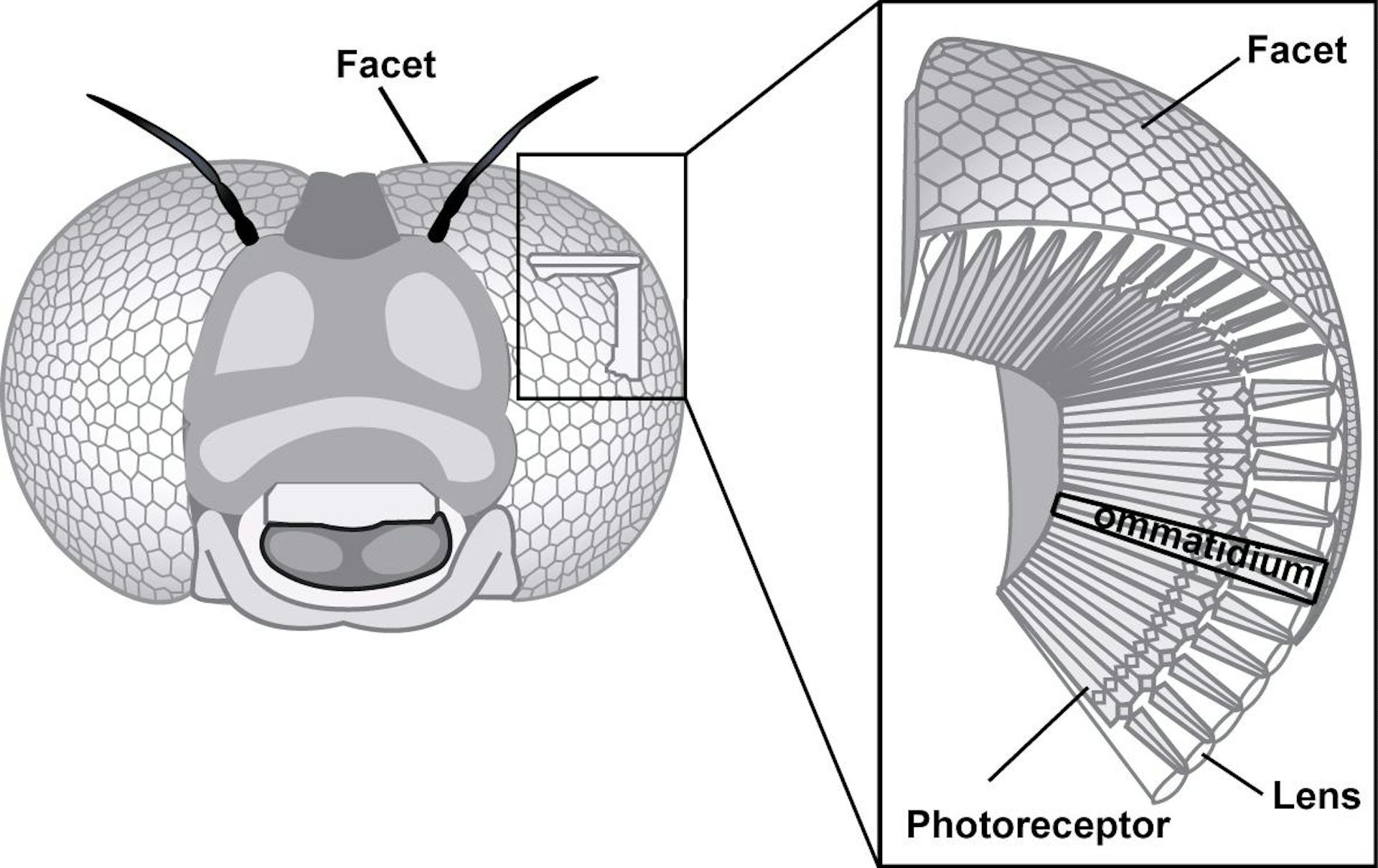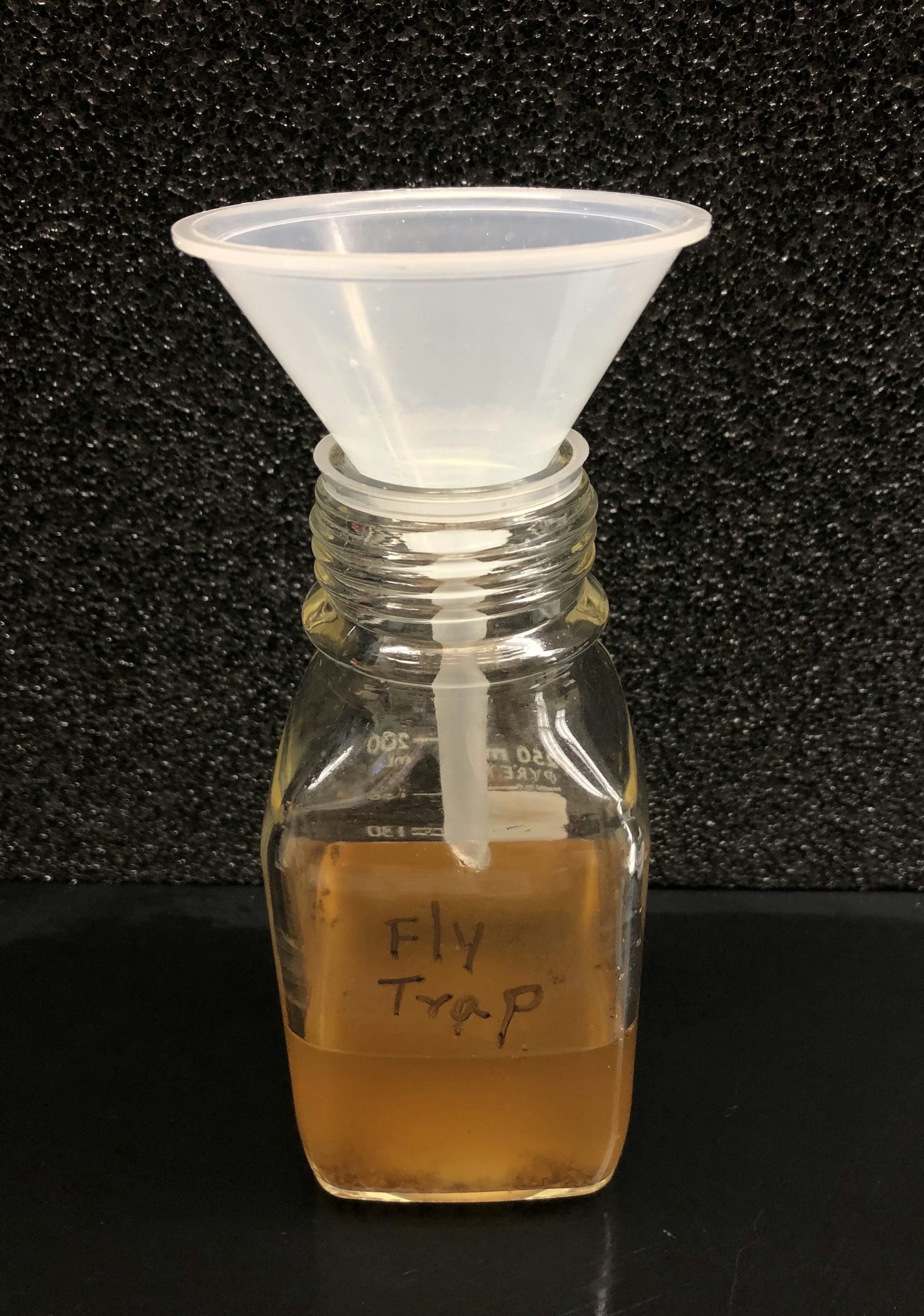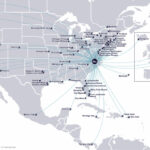Flies react so fast due to their unique visual system and neural processing, allowing them to evade danger with incredible speed and agility, learn more at flyermedia.net. This rapid response involves sophisticated eyesight and neural adaptations that enable flies to process visual information faster than humans. Exploring these capabilities can reveal fascinating insights into insect flight and vision.
1. What Makes Fly Vision So Fast?
Flies’ rapid vision stems from their compound eyes and unique neural processing capabilities. They excel at detecting and reacting to quick movements.
Flies possess compound eyes, composed of numerous individual lenses called facets. Unlike the human eye, which uses a single lens to form an image, each facet in a fly’s eye contributes a pixel to its overall vision. While this results in lower resolution compared to human vision, it enables flies to process fast movements with exceptional speed. According to research from Ecole Polytechnique Fédérale de Lausanne, each of these tiny hexagonal facets takes in light, and the photoreceptors beneath them process it in quick flashes.
 Fly eye illustration, showing tiny hexagonal facets and the photoreceptor layer under these facets
Fly eye illustration, showing tiny hexagonal facets and the photoreceptor layer under these facets
1.1. How Do Compound Eyes Contribute to Fast Reactions?
Compound eyes enable flies to perceive rapid movements by quickly processing light through multiple facets, crucial for survival.
Each facet in a compound eye acts as an independent visual receptor, allowing flies to detect motion with greater precision and speed than animals with simple eyes. This is especially useful for detecting predators or potential food sources. The compound eye’s mosaic-like structure enhances its ability to capture quick changes in the environment.
1.2. What Is the Role of Photoreceptors in Fast Vision?
Photoreceptors in flies process light extremely quickly, enabling them to see many more flashes per second than humans.
Human vision can discern about 60 discrete flashes of light per second. Flies, however, can process up to 250 flashes per second. This high rate of processing allows flies to perceive the world in much greater detail regarding motion, making them highly sensitive to movement and potential threats.
1.3. How Does Light Intensity Affect Fly Vision?
In low light, flies lose some ability to see fast movements, similar to how human vision deteriorates in the dark.
Like cameras, eyes depend on photons to create images. According to research from Florida International University, flies in dim light lose some ability to see fast movements. The summation, a neural strategy that adds together the inputs of neighboring pixels, or increases the time they sample photons, to form an image. This is because fewer photons are available, reducing the speed and clarity of their vision. Despite this limitation, flies can still rely on non-visual cues, such as air currents sensed by small hairs on their body, to detect and evade threats.
2. What Neural Mechanisms Enable Flies to React So Quickly?
Neural adaptations, such as summation and rapid posture adjustments, contribute to the flies’ quick reactions.
Flies use summation to enhance their vision in low light. However, rapid posture adjustments are crucial for quick flight maneuvers. After spotting a threat, fruit flies can adjust their posture in one-fifth of a second before takeoff. Predatory flies coordinate their legs, wings, and halteres for quick mid-flight prey capture.
2.1. How Does Summation Enhance Vision in Low Light?
Summation involves combining inputs from neighboring pixels or increasing photon sampling time to form an image in low light.
Summation helps flies capture more photons when light is scarce, compensating for the lack of visual clarity. This neural strategy enables them to detect movement and threats even in dark environments. This process is equivalent to taking photographs with grainy film or slow shutter speeds, which produce blurrier images, but avoid underexposing your subjects.
2.2. What Role Do Halteres Play in Flight Maneuverability?
Halteres, dumbbell-shaped remnants of wings, help flies sense in-air rotations and maintain balance during flight.
Halteres act as gyroscopic sensors, providing flies with essential feedback for stabilizing their flight and executing rapid maneuvers. These structures vibrate in sync with the wings and detect changes in body rotation, allowing flies to make quick adjustments and maintain control.
2.3. How Quickly Can Flies Adjust Their Posture Before Takeoff?
Flies can adjust their posture in as little as one-fifth of a second before taking off, enabling rapid escape from threats.
This rapid adjustment is crucial for initiating flight quickly and evading predators. The ability to prepare for takeoff so swiftly gives flies a significant advantage in survival. According to research from Current Biology, flies adjust their posture in one-fifth of a second before takeoff.
3. How Do Flies Use Non-Visual Cues to React?
Flies rely on non-visual cues, like air currents sensed by body hairs, to detect threats and escape even in the dark.
Flies have small hairs on their body that can sense changes in air currents, providing them with additional information about their surroundings. These cues are particularly useful in situations where vision is limited. When you move to strike, flies can sense the change in air currents and react accordingly, even before they see your hand approaching.
3.1. What Other Senses Do Flies Rely On for Quick Reactions?
Besides vision, flies use air currents sensed by body hairs to detect threats and react quickly.
These sensory hairs are highly sensitive to changes in airflow, enabling flies to detect movement and potential danger from any direction. This multi-sensory approach enhances their ability to evade threats and survive in complex environments. In addition to visual and tactile cues, flies can also rely on chemical cues, such as pheromones, to detect potential mates or food sources.
3.2. How Do Air Currents Help Flies Evade Predators?
Air currents provide early warnings of approaching threats, allowing flies to initiate escape maneuvers before visual confirmation.
By sensing these subtle changes in airflow, flies can react preemptively, increasing their chances of survival. According to research from Current Biology, flies fly erratically with twisty flight paths to escape swats in the dark. This is especially important in low-light conditions or when visual cues are obstructed.
4. Can We Predict or Influence Fly Behavior?
Understanding the sensory and neural mechanisms underlying fly behavior can help develop effective control strategies.
By studying how flies perceive and react to their environment, scientists can create more targeted and efficient methods for managing fly populations. This knowledge can lead to the development of innovative traps, repellents, and other control measures.
4.1. What Are Effective Strategies for Managing Flies?
Effective fly management strategies include fly traps, backyard cleaning, and eliminating mosquito egg-laying sites.
Fly traps lure flies into a narrow neck bottle filled with apple cider vinegar and beer. Placing a funnel in the bottle neck makes it easy for them to enter, but difficult to escape. Removing stagnant water around the house can eliminate mosquito egg-laying sites. Avoiding insecticides helps protect useful insects like bees and butterflies. These methods offer a more sustainable approach to fly control compared to relying solely on insecticides.
 A simple home-made fruit fly trap
A simple home-made fruit fly trap
4.2. Why Should Insecticides Be Avoided in Fly Control?
Insecticides can harm beneficial insects like bees and butterflies, disrupting ecosystems and causing unintended ecological damage.
According to research from Yale Environment Review, pesticides might be killing beneficial insects beyond their targets. By avoiding insecticides, you can help preserve biodiversity and maintain a healthy balance in your local environment. Other control measures are also more sustainable and less likely to have negative impacts on human health.
4.3. How Can Apple Cider Vinegar Traps Help Control Flies?
Apple cider vinegar traps attract flies with their sweet scent, trapping them in a solution they cannot escape.
These traps are a simple and effective way to reduce fly populations without using harmful chemicals. The vinegar and beer mixture attracts flies, while the narrow neck of the bottle prevents them from escaping. This method is particularly useful for controlling fruit flies in kitchens and gardens.
5. What Role Does Evolution Play in Fly Reactions?
Evolution has honed flies’ escape mechanisms over millions of years, making them exceptionally adept at evading threats.
Flies have evolved sophisticated sensory and neural adaptations that enable them to react quickly and effectively to danger. Over time, natural selection has favored individuals with the fastest and most accurate escape responses, leading to the impressive capabilities we observe today.
5.1. How Have Flies Adapted Over Time to Evade Predators?
Flies have developed enhanced vision, rapid neural processing, and quick flight maneuvers to evade predators effectively.
These adaptations have allowed flies to survive and reproduce in environments where they face constant threats. Their ability to detect and react to approaching predators is a testament to the power of natural selection. These evasive behaviors have become finely tuned over countless generations.
5.2. What Advantages Do Fast Reactions Provide for Flies?
Fast reactions provide flies with a survival advantage, allowing them to escape predators, find food, and reproduce successfully.
The ability to react quickly is crucial for flies in many aspects of their lives. It enables them to avoid danger, capture prey, and navigate their environment with greater ease. These advantages contribute to their overall fitness and reproductive success.
6. How Do Flies’ Visual Capabilities Compare to Other Insects?
While many insects have compound eyes, flies possess unique adaptations that enable them to process visual information with exceptional speed.
Compared to other insects, flies have evolved specialized neural circuits and photoreceptor arrangements that enhance their ability to detect and react to rapid movements. These adaptations make their visual system particularly well-suited for evading predators and capturing prey.
6.1. What Are Some Other Insects with Fast Reaction Times?
Dragonflies and praying mantises are other insects known for their fast reaction times, using their speed to capture prey.
Dragonflies, for example, have excellent vision and can intercept flying insects with remarkable accuracy. Praying mantises use their quick reflexes to ambush prey with lightning-fast strikes. These insects, like flies, have evolved specialized sensory and motor systems to enhance their predatory capabilities.
6.2. How Do Dragonflies Use Their Fast Vision for Hunting?
Dragonflies use their acute vision to track and intercept prey mid-air, relying on rapid calculations to predict their target’s trajectory.
Their large compound eyes provide them with a wide field of view and excellent depth perception, allowing them to locate and pursue prey with great precision. Dragonflies are among the most skilled aerial hunters in the insect world.
7. What Are the Implications of Studying Fly Vision for Technology?
Studying fly vision can inspire new technologies in robotics, artificial intelligence, and computer vision, enhancing motion detection and navigation systems.
By understanding how flies process visual information so efficiently, engineers and scientists can develop more advanced algorithms and sensors for a variety of applications. This research can lead to the creation of robots that can navigate complex environments with greater agility and precision.
7.1. How Can Fly Vision Inspire Better Motion Detection Systems?
Fly vision can provide insights into developing motion detection systems that are more sensitive and responsive to rapid movements.
These systems could be used in security cameras, autonomous vehicles, and other applications where quick and accurate detection of motion is critical. By mimicking the neural circuits and photoreceptor arrangements found in fly eyes, engineers can create more efficient and reliable motion detection technologies.
7.2. Can AI Learn From Fly Brains to Improve Decision-Making?
AI can learn from the neural strategies used by fly brains to improve decision-making in complex and dynamic environments.
By studying how flies process sensory information and make rapid decisions, researchers can develop more sophisticated AI algorithms that are capable of adapting to changing conditions and solving complex problems. This approach could lead to the creation of AI systems that are more robust and versatile.
8. How Does Flight Maneuverability Affect Escape Reactions?
Flight maneuverability is essential for flies to execute quick escape reactions, allowing them to evade threats with agility and precision.
Flies can rapidly change direction and accelerate in flight, making it difficult for predators to predict their movements. Their ability to perform complex aerial maneuvers is a key factor in their survival. These maneuvers are supported by specialized muscles and sensory structures that enable precise control over their wings and body.
8.1. What Physical Adaptations Support Fly Maneuverability?
Physical adaptations such as halteres, specialized wing structures, and powerful flight muscles support fly maneuverability.
Halteres act as gyroscopic sensors, providing flies with essential feedback for stabilizing their flight. Specialized wing structures enable them to generate lift and thrust efficiently. Powerful flight muscles allow them to execute rapid changes in direction and speed.
8.2. How Do Flies Navigate Complex Environments Quickly?
Flies navigate complex environments quickly by integrating visual and sensory information to make rapid adjustments to their flight path.
They use their compound eyes to detect obstacles and potential threats, while their sensory hairs provide them with additional information about their surroundings. This integrated sensory system enables them to navigate even the most challenging environments with remarkable agility.
9. What Is the Role of Genetics in Fly Reaction Speed?
Genetics play a crucial role in determining fly reaction speed, influencing the development of their sensory and neural systems.
Researchers have identified specific genes that are associated with flight performance and escape behavior in flies. By studying these genes, they can gain a better understanding of the genetic basis of fly reaction speed.
9.1. Can Selective Breeding Enhance Fly Reaction Speed?
Selective breeding can enhance fly reaction speed by favoring individuals with faster reflexes and more efficient sensory processing.
By repeatedly selecting and breeding flies with desirable traits, researchers can gradually improve the overall reaction speed of the population. This approach has been used to study the genetic basis of various behaviors in flies.
9.2. How Do Genetic Mutations Affect Fly Reaction Times?
Genetic mutations can affect fly reaction times by altering the structure or function of their sensory and neural systems.
Some mutations may impair their ability to detect or process sensory information, while others may affect the speed or accuracy of their motor responses. Studying these mutations can provide valuable insights into the genetic basis of fly reaction speed.
10. What Are the Future Directions of Fly Vision Research?
Future research on fly vision will focus on understanding the neural circuits underlying their rapid reactions and developing new technologies inspired by their visual capabilities.
Researchers are using advanced techniques such as optogenetics and neural imaging to study the activity of individual neurons in the fly brain. This research is providing new insights into the neural basis of their behavior and paving the way for the development of more sophisticated AI systems.
10.1. How Can Optogenetics Help Study Fly Reactions?
Optogenetics can help study fly reactions by allowing researchers to control the activity of specific neurons using light, providing insights into their roles in behavior.
This technique involves genetically modifying flies to express light-sensitive proteins in specific neurons. By shining light on these neurons, researchers can activate or inhibit their activity, allowing them to study their effects on fly behavior.
10.2. What New Technologies Are Being Developed Based on Fly Vision?
New technologies being developed based on fly vision include advanced motion sensors, autonomous navigation systems, and improved computer vision algorithms.
These technologies aim to mimic the efficiency and accuracy of fly vision, enabling them to perform complex tasks with greater speed and precision. This research is pushing the boundaries of what is possible in robotics and artificial intelligence.
Are you fascinated by the incredible agility and speed of flies? Explore flyermedia.net to discover more about the wonders of aviation, including flight training, aviation news, and career opportunities in the USA. With resources tailored to aspiring pilots, aviation enthusiasts, and industry professionals, flyermedia.net is your premier source for all things aviation. Embark on your journey into the skies with us today!
FAQ Section
- How Do Flies React So Fast compared to humans?
Flies react faster due to their compound eyes, enabling them to process more flashes of light per second, and rapid neural processing. - What are compound eyes, and how do they help flies react quickly?
Compound eyes consist of many individual lenses (facets) that quickly process light, allowing flies to detect movement more efficiently. - What is summation, and how does it improve fly vision in low light?
Summation is a neural strategy that combines inputs from neighboring pixels or increases photon sampling time to form an image in low light, enhancing vision. - What role do halteres play in a fly’s ability to maneuver quickly?
Halteres are dumbbell-shaped organs that act as gyroscopic sensors, helping flies maintain balance and maneuver quickly in flight. - How do flies use non-visual cues to react to threats?
Flies use small hairs on their body to sense changes in air currents, providing early warnings of approaching threats even in the dark. - What are some effective strategies for managing flies without using insecticides?
Effective strategies include using apple cider vinegar traps, keeping backyards clean, and eliminating stagnant water to prevent mosquito breeding. - How has evolution influenced the reaction speed of flies?
Evolution has honed flies’ escape mechanisms over millions of years, resulting in sophisticated sensory and neural adaptations for evading threats. - What technologies are being developed based on the study of fly vision?
Technologies include advanced motion sensors, autonomous navigation systems, and improved computer vision algorithms. - Can selective breeding enhance the reaction speed of flies?
Yes, selective breeding can enhance fly reaction speed by favoring individuals with faster reflexes and more efficient sensory processing. - How can optogenetics help researchers study fly reactions?
Optogenetics allows researchers to control the activity of specific neurons using light, providing insights into their roles in fly behavior.
Contact Information:
Address: 600 S Clyde Morris Blvd, Daytona Beach, FL 32114, United States
Phone: +1 (386) 226-6000
Website: flyermedia.net
